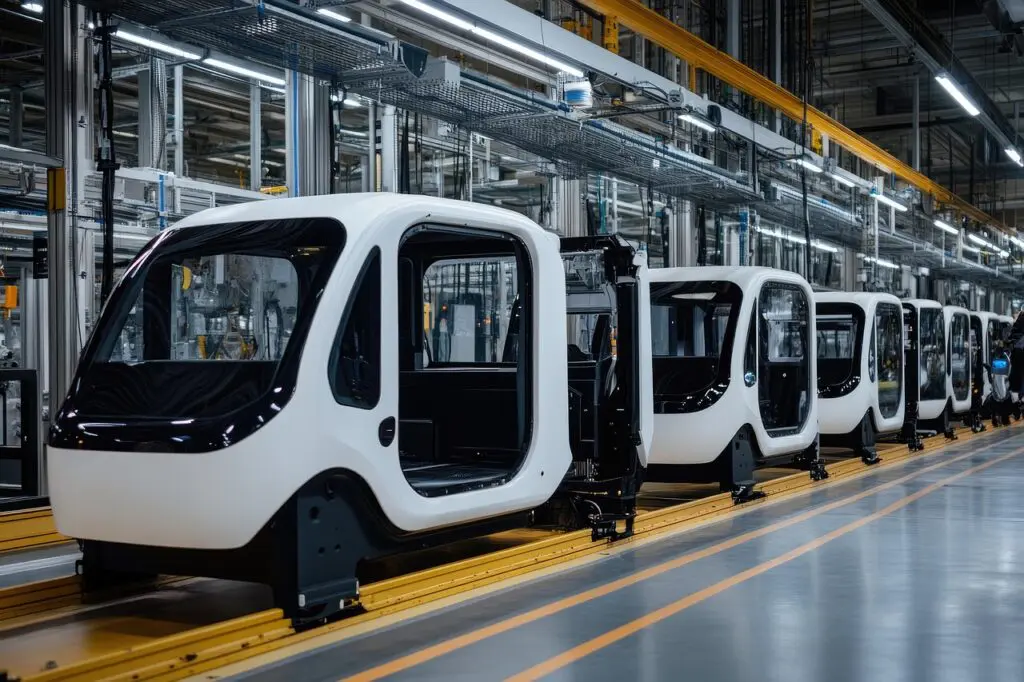Automation is no longer just for big manufacturers. It’s essential for staying competitive, improving efficiency, and boosting profitability. However, integrating automation requires careful planning, investment, and consideration.
In this blog, we’ll go over the key factors you should consider before automating your manufacturing line.
1. Understand Your Production Needs

Start by understanding your production needs and goals. Different manufacturing processes benefit from automation in different ways. For example:
- Repetitive Tasks: Automation can increase speed and reduce errors in tasks like assembly or packaging.
- High-Mix, Low-Volume Production: You’ll need flexible solutions for frequent changes in product types or small batches.
- Precision and Quality Control: Automation ensures consistent quality and precision, which is tough for humans to maintain over long runs.
Understanding your needs helps determine whether robotics, conveyors, or AI solutions are right for your line.
2. Cost vs. ROI
Automation requires a significant upfront investment, especially for small manufacturers. But over time, it can save money through labor cost reduction, increased efficiency, and fewer errors. Key ROI factors to consider:
- Labor Savings: Automation reduces the need for workers in repetitive tasks, freeing up labor for value-added activities.
- Increased Production Rates: Automation runs continuously, boosting output and revenue.
- Reduced Errors and Waste: Fewer mistakes mean better product quality and less waste.
Conduct a thorough ROI analysis to understand how long it will take to see returns. Be realistic about potential savings.
3. Integration with Existing Systems
Automation only works if it integrates well with your current systems. Consider:

- Software Compatibility: Your automation system should integrate with your ERP and inventory management software for smooth data flow.
- Machine Compatibility: New equipment must work with existing machinery. Retrofits or upgrades may be necessary.
- Data Synchronization: Automation generates a lot of data. Ensure systems capture and analyze it to drive decisions.
Excel Automation can help assess your current systems and ensure smooth integration.
4. Flexibility and Scalability
Your business will grow, and so will your production needs. When automating, ensure the system you choose is scalable and flexible enough to meet future demands.
- Scalability: Can your system handle increased volumes or additional product lines? Choose solutions that allow upgrades without full overhauls.
- Flexibility: If you frequently change products, select automation that adapts quickly to new tasks without long downtimes.
Automation that grows with your business provides long-term value.
5. Employee Training and Support
 Automation will change your workforce needs. While fewer manual workers are needed, skilled operators and technicians are essential to maintain and optimize systems. Invest in training programs to ensure employees are ready. Without training, automation won’t reach its full potential, causing delays and errors.
Automation will change your workforce needs. While fewer manual workers are needed, skilled operators and technicians are essential to maintain and optimize systems. Invest in training programs to ensure employees are ready. Without training, automation won’t reach its full potential, causing delays and errors.
Also, ensure ongoing technical support to keep systems running smoothly. Regular maintenance and repairs minimize downtime.
6. Supplier and Vendor Selection
Choosing the right supplier is as important as choosing the technology itself. An experienced vendor provides the best solutions and valuable advice throughout the process. Consider:
- Reputation and Experience: Select vendors with a proven track record in your industry.
- Support and Training: Ensure the vendor offers ongoing technical support and training.
- Customization: Your operation is unique, so make sure the vendor offers tailored solutions.
A reliable vendor partnership ensures smooth implementation and long-term success.
7. Safety and Regulatory Compliance
Automation affects safety on the manufacturing floor. Depending on the complexity of your systems, you may need new safety procedures. Automated machinery, especially robots, presents specific safety concerns that must be addressed.
Additionally, ensure your automation complies with industry regulations, such as safety certifications, environmental rules, and labor laws. Non-compliance can lead to fines or disruptions.
Work with experts like Excel Automation to design systems that prioritize safety and meet regulations.
The Bottom Line: Making the Right Investment
Automating your manufacturing line isn’t just about adopting new technology; it’s about strategically improving efficiency, quality, and profitability. By considering factors like production needs, ROI, system integration, scalability, employee training, vendor selection, and safety, you can make an informed decision.
Automation is a long-term investment. Consult experts, conduct research, and plan for future growth to ensure your automation strategy delivers results and keeps you competitive in a changing market.
